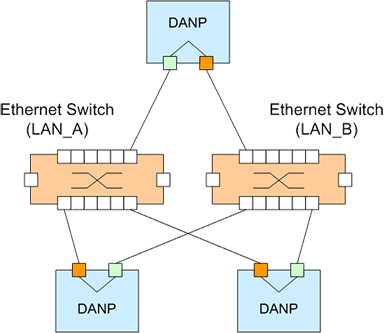Products
Technology
Parallel Redundancy Protocol (PRP)
The Parallel Redundancy Protocol is an IEC standard (IEC 62439-3 Clause 4) providing redundant Ethernet. Under PRP, each node is connected to two separated, parallel Local Area Networks (LANs). Source nodes send two copies of each packet, one over each network. When a destination node receives a packet, it accepts the first copy and discards the second copy, in other words, eliminating the duplicate.
The two networks are assumed to be fail-independent. The destination node will always receive at least one packet as long as either one of the two networks is operational. This provides zero-time recovery in case of a single failure, so no frames are lost.
The downside of PRP is that the network cost is double when comparing with a single non-redundant network. This makes it more expensive to implement than the other redundancy protocols. A High-availability Seamless Redundancy (HSR) ring provides the same level of redundancy with a lower cost. The advantage of PRP, when compared with HSR, is that normal non-PRP aware nodes can be connected to the network without a RedBox. However, these singly attached nodes can communicate only with the nodes connected into the same LAN, and they do not benefit from the redundancy.
Flexibilis Redundant Switch is an Ethernet Switch with PRP support.


